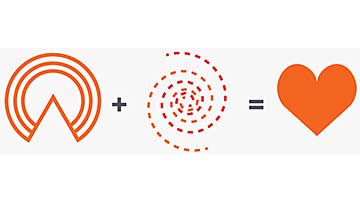Measuring Emotional Online Video Ad Engagement With Science!
How emotionally involved are viewers in the ads you create? The result tells a lot about how well those ads will perform.
Online video advertising company YuMe teamed up with measurement specialist Nielsen to measure viewers' emotional engagement with ads. They did so with the tools of neuroscience, including eye-tracking and biometric measurement.
 So what does emotional engagement, anyway? In an infographic that summarizes the results, YuMe calls it the combination of the intensity of audience signals and synchronicity of audience response.
So what does emotional engagement, anyway? In an infographic that summarizes the results, YuMe calls it the combination of the intensity of audience signals and synchronicity of audience response.
Need a translation? Here's how Paul Neto, YuMe's director of research, explains it:
"In its simplest form, ‘emotional engagement' is attention to something that emotionally impacts you. This metric is a composite score based on biometric inputs including heart rate, respiratory patterns, movement, and skin conductance as measured through Nielsen's proprietary biometric monitoring system. The intensity of these inputs that are detected through an individual's various sensory channels provides insights into how individuals are reacting emotionally to various stimuli, including content and video advertising in this study. Emotional engagement helps us identify a user's proclivity towards content and advertising."
YuMe and Nielsen's testing, done exclusively with 18- to 34-year-olds, found that emotional engagement varies by device, and that all devices have unique emotional engagement patterns. Here are some of the results:
- Emotional engagement is highest on phones and tablets.
- For all devices, emotional engagement is highest during the first 10 seconds of the video. After that, things vary.
- Phones see an early and dramatic emotional engagement peak. Show the brand early to take advantage of this.
- Tablet viewers maintain engagement for longer.
- Laptop viewers have the most variable emotional engagement patterns.
- TV viewers end with an emotional high, just in time for a commercial's final branding.
- 15-second ads are the way to go for all platforms. Short ads help drive high emotional engagement through the full ad.
- On all platforms, viewers showed high emotional engagement when a character onscreen spoke directly to them.
"We all know that the fight for attention is fiercer than ever," says Dr. Carl Marci, chief neuroscientist at Nielsen Consumer Neuroscience. "Our ultimate goal is to equip marketers with an understanding of how to most effectively grab attention on every screen. One of the biggest takeaways from this study is that attention spikes in the first ten seconds on all devices, so it's critical to deliver your key message quickly."
For more results, see the infographic.
Troy Dreier's article first appeared on OnlineVideo.net